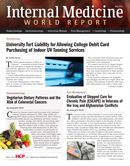The Diabetes Pandemic Requires Global Policy Solutions
The global pandemic of diabetes poses a huge public health challenge to every nation. In 2014 more than 380 million people around the world were living with diabetes-8.3% of the adult population. That number is expected to increase to 592 million by 2035.

The global pandemic of diabetes poses a huge public health challenge to every nation. In 2014 more than 380 million people around the world were living with diabetes—8.3% of the adult population. That number is expected to increase to 592 million by 2035.
In more recent years, diabetes has no longer become a disease of the affluent. Lower socioeconomic groups in high-income countries are disproportionately affected; 77% of the world’s people with diabetes live in low- and middle-income countries. And diabetes is no longer a disease of older people, as almost half of those with diabetes are in the 40- to 50-year-old age range.
In 2013 diabetes was associated with $548 billion in health care expenses globally, a figure that will increase when indirect costs are added in from lost productivity and comorbidities. This tremendous cost threatens to overwhelm health systems and reverse any gains in economic development in less wealthy countries.
Writing in a JAMA Viewpoint opinion piece, Frank B. Hu, MD, PhD and Ambika Satija, BA, Harvard T.H. Chan School of Public Health, and JoAnn E. Manson, MD, DrPH, of Brigham and Women’s Hospital, Harvard Medical School, Boston, MA, argued that the consequences of diabetes on human health and economics must be fully recognized throughout the world, and policymakers and the public must together address the urgent need for solutions.
This is especially hard, because diabetes (in particular, type 2 diabetes) is determined by a multifactorial mix of genetic, epigenetic, and lifestyle factors that interact and occur within a larger environment. As countries around the world develop economically, people abandon traditional diets and active lifestyle in favor of more Westernized diets with highly processed foods and refined carbohydrates.
Traditionally, obesity prevention has focused on encouraging individual behavior change while paying little attention to the broader environmental forces influencing human behavior.
Although individual responsibility and good health provider counseling remain important, the public should not forget that the importance of societal, environmental, and public policy factors has increased. Concrete actions must be undertaken to transform the currently “obesogenic” and “diabetogenic” environments into more wholesome living spaces and communities, the authors state.
To that end, policy initiatives are necessary for effective solutions. For instance, macrolevel environmental change should be introduced to create more sustainable improvements in individual health behaviors to influence obesity prevalence and diabetes burden in the entire population.
By influencing food and agricultural production and subsidization, policy initiatives can alter the food system of a country, creating a more healthy food environment that influences better food choices. Greater incentives for activity can be offered, especially in populations at high risk of developing diabetes.
For example, Mexico is the one of the first countries to implement an excise tax on sugar-sweetened beverages; preliminary studies have shown a 10% reduction in purchases of taxed sugar-sweetened beverages and concomitant increase in the purchase of untaxed beverages without added sugar.
Most policy changes that could affect diet and physical activities are within the domain of government, which is where action must begin, according to Hu and his colleagues. However, most agricultural, nutrition, and urban planning policies worldwide are not conducive to nutritious eating and active living.
“To align these policies with health goals, multisectorial efforts are needed because prevention is beyond the scope of any single governmental agency, usual models, or health care system,” Hu et al noted.
Urban planning and transportation policies can easily help make physical environments friendlier to the use of public transportation, walking, and biking; financial incentives can provide for the production and consumption of vegetables, fruits, whole grains, nuts and legumes; and tax policies can be used to discourage consumption of unhealthy foods such as sugar-sweetened beverages.
All stakeholders, including the government, food industry, health professionals, urban planners, media, nongovernmental organizations, communities, and individuals, must get involved to make a change of this nature and curb the diabetes pandemic.
